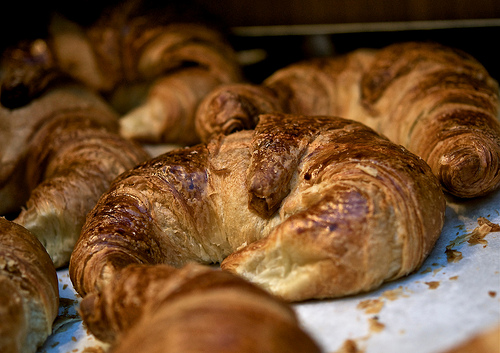Do you eat croissants for breakfast?
- Croissants are puffy bakery food items that are typically flaky and buttery in texture, that are usually tan or light brown in colour.
- Croissants are said to have been derived from a yeast-dough pastry named ‘kipfel’, in Austria, Europe, that may have its origins as early as the 1200s, although it is possible that they did not exist until the 1600s.
- Croissants are mainly made with butter and a bread like dough containing yeast, and can be filled and flavoured with numerous foods including chocolate, nut, ham, cheese, dried fruits and apple
- Croissants are traditionally crescent in shape, but can be spherical or cylindrical, and the typical shape is said to have originated from the Austrian kipfel.
- Croissants are popularly eaten during breakfast, commonly sold as a type of fast food, and are often sold frozen so that they can be thawed and heated at home.
Croissants
Image courtesy of Zdenko Zivkovic/Flickr
- There are many legends regarding the history of the croissant, and the most popular is that it originates in the late 1600s, when bakers created crescent shaped pastries based on the Turkish flag, due to the Turks having been defeated by their enemies.
- The term ‘croissant’ was named after the French word for ‘crescent’, referring to the traditional shape.
- While the origin of croissants is uncertain, they were probably introduced to France in the late 1830s, by officer August Zang from Austria, in a bakery that he owned and was located in France’s Paris, in Europe.
- Croissants are typically made by folding butter into dough, rolling the dough into sheets, and then continuing the folding and rolling process known as ‘laminating’, before cutting and rolling into a crescent shape and baking in an oven.
- Croissants have significant quantities of sodium, selenium, folate and thiamin and are also high in fat.





